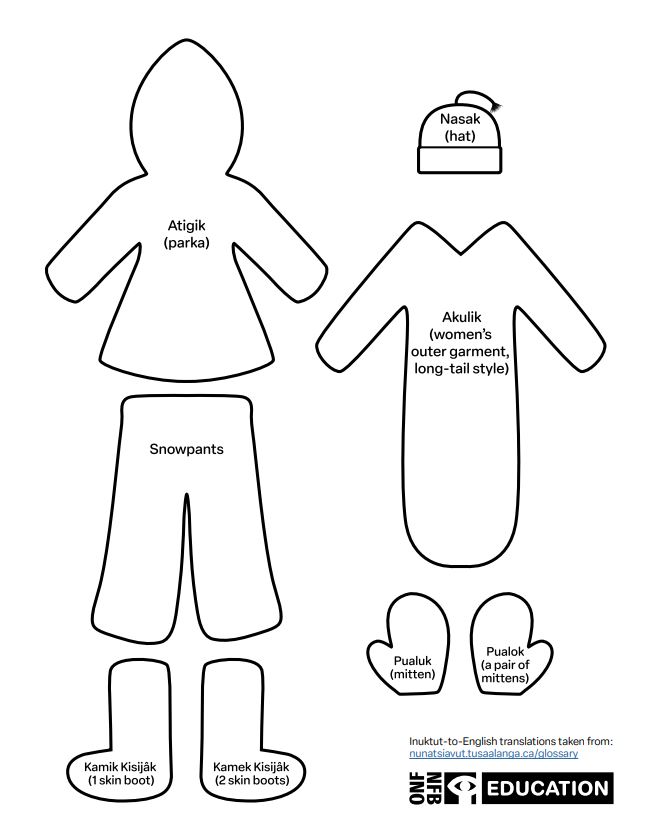
Mini-Lesson for Miss Campbell: Inuk Teacher
Mini-Lesson for Miss Campbell: Inuk Teacher
Mini-Lesson for Miss Campbell: Inuk Teacher
School Subjects:
- Indigenous Studies – Identity/Society
- Arts Education – Visual Arts
- Geography – Territory: Indigenous
- Health/Personal Development – Careers & Education
Ages: 12–14
Miss Campbell: Inuk Teacher, Heather Campbell, provided by the National Film Board of Canada
Keywords/Topics: Inuit, Labrador, Indigenous Language, Culture, Residential Schools, Education, Careers, Leadership
Overarching Question: How does Miss Campbell make connections between her Inuit culture and her lived experience in residential school to shape her life trajectory and change the lives of her students?
Warnings: Description of residential schools
Educational Synopsis and Pedagogical Goals: As a trailblazer for an Inuit-led educational system, Miss Campbell was the only teacher in a one-room school, teaching grades K–12. Although she had inherited the methodologies of earlier educators, her motivation was entirely different. In a career that spanned more than 35 years, she embraced her Inuit heritage and passed on her passion for learning through music and stories. In 1986, Evelyn Campbell was awarded the Order of Canada.
Part oral history and part visual poem, Miss Campbell: Inuk Teacher combines director Heather Campbell’s exquisite water colour paintings of narwals, polar bears, seals and birds with home movies, family photos and lively animation to capture the spirit of this extraordinary woman for her documentary portrait.
This film and accompanying mini-lesson will serve as an introduction to Inuit culture for your students, focusing on language and traditional cultural practices. By exploring these fundamental cultural elements, students will gain insight into Miss Campbell’s emphasis on the integration of Inuit culture within her curriculum. They will also discover her commitment to fostering a sense of pride among her students through cultural understanding and appreciation.
The activities in this cross-curricula mini-lesson were designed to:
- define and recognize the systemic challenges faced by Inuit communities in regard to education;
- investigate the impact of residential schools on Inuit and the historical exclusion of Inuit perspectives in education and its implications;
- understand the cultural significance of including Inuit culture and voices in the education system;
- appreciate and honour the contribution and legacy of Miss Campbell and of Inuit women in Canada.
Activity 1: Inuit Culture
Watch clip: 0:08-1:11
PART 1: Watch the clip provided and identify various elements of Inuit language and culture depicted. Discuss as a group what stands out to you and why.
Learn and reinforce Inuktitut vocabulary through a matching game. Use words such as Nunatsiavut, Nunavik, kamek, ulu, atigik, silapaak, amautik, pualok, Inuk, Inok and Inuit. Create matching pairs of words and their meanings to test your understanding.
Identify and list animals depicted in the excerpt in Inuktitut. Explore additional animals shown in the attached image from the film, such as seals, narwhals, polar bears, birds, etc. Discuss their significance in Inuit culture and daily life.
Use the resources available on the Tusaalanga website (https://tusaalanga.ca/) to create the personalized matching game for classmates.
PART 2: Have students research and explore other Inuit practices:
- Throat singing
- Dog teaming
- Inuit games
- Drum dancing
- Step dancing
- Inuit tattoos
- Inuit tools
Once students have researched one of these practices, they can choose a creative way to share their learning with the class. This could be through creating a piece of music, a performance or presentation or a digital book.
PART 3: Mapping Inuit dialects and communities
Using this website students can work in small groups, each taking one of the seven dialects listed and creating a map of the region where that dialect is spoken. Students can also list characteristics unique to their community (this could include pronunciation, weather and land-based aspects or cultural differences).
Summary:
This set of activities aims to provide students with an immersive experience in Inuit language and cultural traditions. The mapping activity serves to deepen students’ understanding of the geographic distribution, diverse circumstances and cultural nuances within Inuit communities. For instance, in Nunatsiavut, the craft of making black-bottomed seal-skin boots, prized for their waterproof qualities, is less common due to fewer artisans. Conversely, in more northern regions, such craftsmanship is prevalent. Similarly, the use of dog teams varies: in Nunatsiavut, dog teams are predominantly used for races, while in more northern areas, they retain their traditional roles in hunting, fishing and wood gathering for home-heating purposes.
Activity 2: Navigating Two Worlds
Prior to watching the following clips from the film, define what residential schools are and have a discussion on their impact on Indigenous Peoples in Canada.
Use Activity 1 in this NFB mini-lesson below to help facilitate this discussion.
Watch clips:
- Residential school: 2:40-3:26
- 3:27-4:32
- 4:33-5:02
- 10:07-10:45
After watching the above clips, either individually or in groups, create a Venn diagram to analyze the impact of different educational systems on Miss Campbell and her students. In one section of the diagram, discuss and write about the effects of the residential school system on Miss Campbell. In the second section, examine the impact on Miss Campbell’s students as they learn about Inuit culture in her classroom.
As you complete the Venn diagram, consider any potential crossovers between these two educational systems. Discuss as a class whether there are any similarities or differences in Miss Campbell’s experiences and her students’ experiences. Reflect on the broader implications of what is being learned and its influence on the students’ perspectives and understanding.
Summary:
This activity is designed to facilitate a critical analysis of the impact of distinct educational systems on Miss Campbell and her students, as depicted in the video clips. By examining similarities, differences and potential crossovers between the residential school system and Miss Campbell’s classroom, students will develop a deeper understanding of the broader implications of acquiring knowledge about identity. In exploring how this knowledge influences self-perception and the perceptions of others, particularly in the context of Miss Campbell and her students, learners will engage in thoughtful reflection on the complexities of cultural education and its effects on individual and collective identities.
Activity 3: Honouring Educators
Watch clip: 6:14-7:16
Classroom discussion questions:
- What was the connection between Miss Campbell’s childhood experiences and her approach to teaching?
- How has an educator in your life impacted you?
Students will identify someone in their school or broader community who inspires/contributes to the wellbeing of those around them.
Option A) Students write a description of the person and their contribution and share it with the class.
Option B) Students write a letter to the person, describing the impact they’ve had on them.
Option C) Students design interview questions and conduct a simple interview. This could take the form of a phone call, an email, an in-person conversation or a video call that is recorded. Students could then put together a presentation for the class, including photographs and/or other audiovisual material that shares more about this person’s contribution.
Option D) Students could make something—for example, a certificate or a craft—to honour the person.
Summary:
This activity is designed to examine the impact of an educator on students’ lives and encourage introspection and appreciation for mentorship. Additionally, students will identify individuals within their school or broader community who inspire or contribute to the wellbeing of others, promoting recognition of positive role models and community engagement. By engaging in the various activities, students will develop communication skills, empathy and appreciation for the contributions of others while exploring various forms of expression and interaction, from written communication to visual presentations and interviews. Ultimately, this activity aims to foster a deeper understanding of the profound influence educators and community members have on individuals and society as a whole.
Take Action: Deepen Your Learning
Students can make a tiny clothesline of Inuit clothing that’s cut out of construction paper (*a sample and worksheet with drawn outlines of these items is provided). While cutting out the pieces of clothing, students can learn the Inuktitut word for each item.
Students can paint an image in the spirit of the film, such as the sunset over the ocean. This can be given as a gift to an educator or community member who has made a significant contribution to the student’s life.
Students could learn the Inuit anthem that is sung instead of “O Canada!”
Students could learn a hunting, fishing or trapping song and/or write their own.
Additional Resources
- An Interdisciplinary Educational Resource to Accompany the Unikkausivut: Sharing Our Stories Initiative
- Inuit dialects in Canada
- Significance of dog sledding – “Puvirnituq: Jani-Marik Beaulne”
Inuit Games:
Darlene Holwell is a single/foster mother who is who is dedicated to teaching and promoting Inuktitut in her community of Nain, Nunatsiavut. She is also an active member of the Nain Brass Band, with which she has travelled to many places in Canada and abroad, such as St. John’s, George River, Quebec, and Germany. She is an active volunteer at the school and in the community, and loves to teach others about Inuit language and culture.
Pour lire cet article en français, cliquez ici.
Discover more Mini-Lessons | Watch educational films on NFB Education | Watch educational playlists on NFB Education | Follow NFB Education on Facebook | Follow NFB Education on Pinterest | Subscribe to the NFB Education Newsletter




